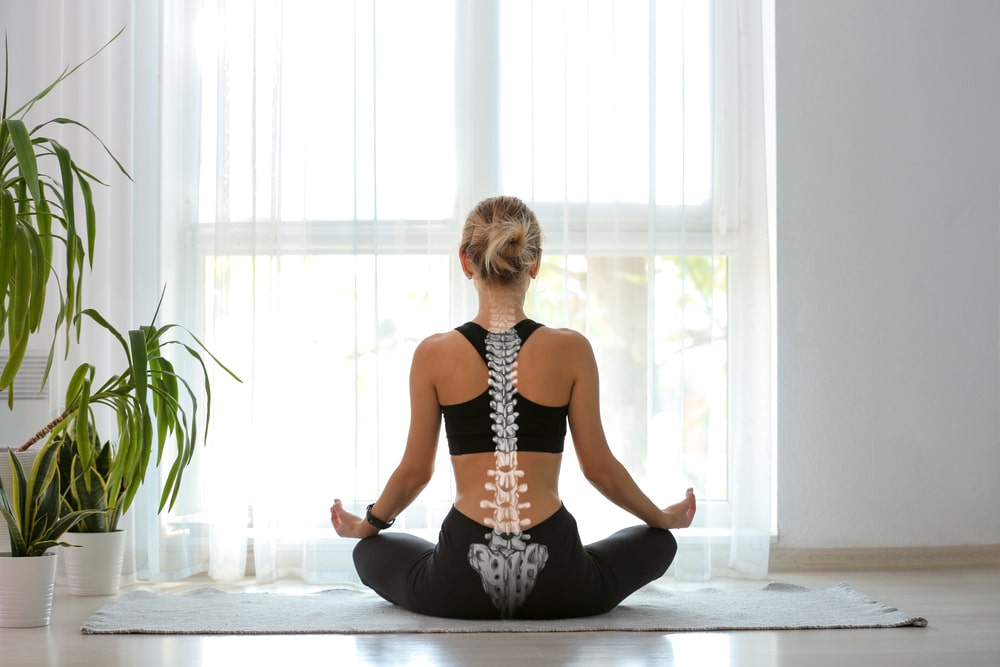Adding Essential Exercises Can Help Enhance Your Body Posture
Imagine a pristine, untouched blanket of snow. What’s the first impulse? To lay back and create a glistening snow angel, naturally. This spontaneous activity is quite similar to a top-notch exercise for enhancing your posture: the wall angel.
Switch from the snowy ground to a bare wall and you’ve got the concept. Wall angels exercise the muscles responsible for moving your shoulder blades—specifically, the middle and lower parts of the trapezius and rhomboids in your back, as well as the rotator cuff muscles in your shoulders. They also engage the core postural muscles that maintain your trunk’s upright position, all while stretching out the chest muscles a bit.
Physical therapist Karena Wu, PT, DPT, who leads ActiveCare Physical Therapy in New York City, describes them as a highly effective exercise.
Although wall angels seem simple, they can significantly increase the strength and flexibility needed to amend a hunched-over posture. Here’s a breakdown of how to incorporate them into your exercise regimen.
Mastering Wall Angels: Step-by-Step Instructions
This beneficial and soothing exercise can be easily included in your home workouts or as a warm-up. Follow these steps to execute wall angels correctly.
- Lean against a wall, planting your feet a bit forward and bending your knees slightly. Your backside, spine, head, and ideally, your elbows and hands should all make contact with the wall,” Wu advises.
- Begin with your elbows bent at a right angle and positioned slightly below shoulder level, forming a “W” shape with your arms.
- Engage your abdominal muscles to keep your core stable, with a natural spinal curve.
- While maintaining the bend in your arms, elevate your elbows above your shoulders and reach your hands towards one another.
- Return your arms to the initial position, mirroring the snow angel movement.
- Complete three sets of 10 repetitions each.
Modifications for Wall Angels If You’re Finding Them Challenging
1. Wall Angel in the Scapular Plane
If fully extending your arms against the wall is tough due to shoulder tightness, Wu suggests trying the exercise about 30 to 45 degrees forward from the wall, which she notes is gentler on the shoulder joints.
- Same as the original positioning with your feet forward, knees slightly bent, and your backside, back, and head against the wall.”
- Place your arms roughly 30 to 45 degrees forward from the wall and start with your elbows bent, forming a “W” with your arms just below the height of your shoulders.
- As before, engage your abdominals to solidify your core while maintaining a natural curve in your back.
- With arms bent, raise your elbows above your shoulders, with hands approaching each other, as before.
- Return to the starting “W” position.
- Perform three sets of 10 repetitions.
2. Wall Angel with Reduced Range of Motion
If necessary, Hannah Solomon, PT, DPT, a physical therapist at the Hospital for Special Surgery, recommends limiting the movement so that your elbows do not rise above shoulder level to keep it comfortable and prevent pain.
3. Using a Soft Object Behind Your Neck
For those with pronounced forward rounding of the posture that prevents your head from fully reaching the wall, Solomon suggests placing a pillow or a small, soft ball behind your neck to fine-tune the sensation and maintain some level of feedback from the wall.
- Insert a soft object, like a cushion or a ball, behind your neck.
- Stand against the wall as previously described, with your feet forward and knees slightly bent.
- Make a “W” with your arms and elbows bent, placed below shoulder height.
- Continue to brace your core, keeping your spine’s natural arch.
- Then lift your elbows, allowing your hands to meet each other above.
- Go back to making your wall “snow angel.”
- Do three sets of 10 repetitions each.
The Advantages of Integrating Wall Angels into Your Workout
Physical therapists hold this exercise in high esteem for several key reasons:
1. Enhanced Shoulder Mechanics
Wu explains that the initial 60-degree movement when raising your arm is led by the arm bone (the humerus), and then the shoulder blade needs to synchronize its movement, rotating outward and upward. Wall angels are designed to improve this crucial coordination.
2. Posture Improvement
Although we don’t usually stand with our backs flush against a wall, this position can offer tactile insight into how we support our own weight throughout the day.
Solomon highlights that even the simple act of standing against the wall can serve as a physical reminder of optimal alignment, especially for those with a tendency to slouch. Engaging in wall angels activates the upper back muscles and naturally stretches out the chest, providing what she deems a “postural reset.”
Common Mistakes to Avoid with Wall Angels
Wu observes that individuals lacking sufficient shoulder mobility might compensate by arching their back excessively or allowing their buttocks and head to move away from the wall. Both compensations can undermine the effectiveness of the exercise by…
“Incorrect muscle engagement can perpetuate the poor posture you’re endeavoring to improve,” explains Wu. It’s counterproductive to practice an exercise with improper form.
Furthermore, Solomon notices a common tendency for individuals to inadvertently hike their shoulders up to their ears as they lift their arms during the exercise.
“Over-lifting in that region can lead to increased tension,” she notes.
On a brighter note, wall angels are generally safe and pose little risk of injury for most people. They can be safely performed individually unless one is dealing with shoulder injuries or conditions.
“As with any exercise, if it brings pain or significant discomfort, it might not suit you, and it would be advisable to consult a professional,” Solomon advises.
Maximizing the Benefits of Wall Angels
To ensure effective muscle activation, Wu suggests engaging your abdominal muscles throughout the exercise to maintain core stability while allowing your arms to move at the shoulder joints.
Maintain a 90-degree bend in your elbows to make sure you’re targeting the correct muscles. Straightening your arms can unintentionally shift the focus to your deltoids and triceps, which won’t aid in improving your posture.
It’s also crucial to elongate your spine while performing wall angels.
“Imagine a string gently pulling you upward from the crown of your head,” Solomon suggests as a visualization to maintain height.
Solomon recommends warming up with wall angel exercises before progressing to more intense upper body strengthening activities, such as rows, to foster robust posture habits.
“The wall angel helps set the tone for subsequent exercises and primes the body for additional strengthening work,” she adds.
The Significance of Maintaining Optimal Posture
Why devote effort to better posture? Your posture throughout the day can impact your overall health in numerous ways.
“Your posture can influence everything from your muscles and nerves to your heart, lungs, how your body processes food, your metabolic rate, mood, and energy levels,” Wu elaborates.
A head and shoulders that protrude forward increase spinal stress, create an imbalance in muscle tension, and can result in compromised circulation.
In concert, this position can compress internal organs, making the heart pump more vigorously, diminishing lung functionality, and disrupting the digestive system. To put it simply, Wu says, “Your body operates below its ideal capacity.”
While practicing wall angels alone may not resolve all posture-related concerns, they can serve as a beneficial step towards achieving better postural alignment.














